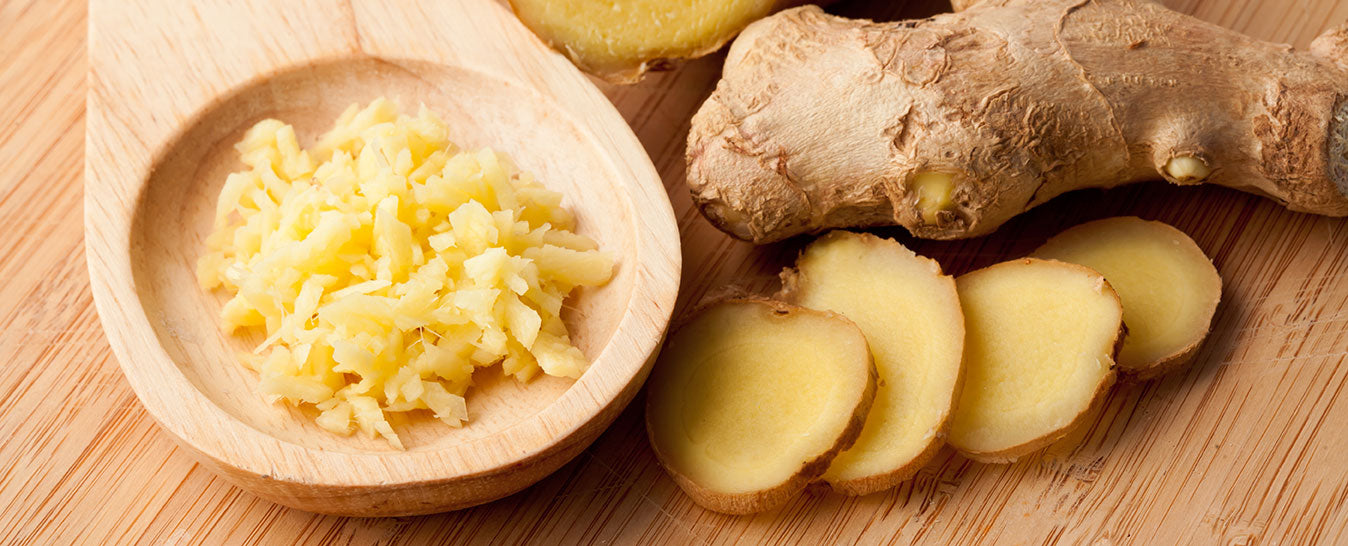1-866-405-5138 (U.S.) 🇺🇸 or
1-925-331-6892 (Non-U.S.)

We’ve all heard of ginger as an ingredient, but ginger for joints? According to some interesting research, ginger may very well be one of the best herbs for joint pain.
Scientists tell us that smell may be the most powerful trigger for memories. Nothing takes you back to your childhood faster than a special scent, especially when it’s one from the kitchen. Among the most nostalgic for many is the scent of baking ginger, whether it be gingerbread, ginger snaps, or a well-spiced pumpkin pie.
It’s not often that these sorts of favorite childhood treats also have great applications for your wellness; but in the case of ginger, that’s exactly the case!
In the same way that a warm gingerbread cookie might’ve helped soothe the bumps and scrapes of childhood, taking ginger as a supplement can help support healthy joints and muscles. Without further ado, let’s talk about the incredible story behind ginger’s joint supporting powers and the intriguing research that puts it in the conversation about the best herbs for joints.
Just about every modern kitchen includes a rack full of spices. To us, things like cloves, nutmeg, allspice, and ginger are there just to give our food an extra kick; but, in the exotic places where they come from, they’ve had other uses for countless generations. Long before modern medicine arose, herbs and spices were the healer’s stock in trade. Now, by looking at them through the lens of scientific research, we can understand the special compounds that give ingredients like ginger their wellness-enhancing properties.
For example, ginger is used for all kinds of home wellness applications: soothing an upset stomach, calming motion sickness and, of course, easing joints and muscles. But, what’s the explanation for ginger’s joint-supporting powers?
Not bad for a childhood treat, and we’ve barely scratched the surface. There’s even more to the story of ginger’s status as one of the best herbs for joints.

Ginger is packed with more than just tasty flavor. The compounds in ginger help to get in the way of a host of other compounds that can be responsible for troublesome joints, and the science is actually pretty interesting.
“Cyclooxygenases”, also known by the acronym “COX”, are enzymes that trigger the production of molecules which contribute to widespread irritation and pain. As you might expect, compounds such as the ones found in ginger that help block these COX enzymes help support more comfortable joints as a result. Studies show ginger that does more than just block these COX enzymes, though. It can also help to block the formation of leukotrienes, another type of biologically active molecule which can also trigger irritation.1
The last molecular foe in the battle for comfortable joints is yet another that ginger is well equipped to fight. It’s called PGE-2, and your body actually makes it in response to certain “irritation triggers”. But, at least two compounds found in ginger root have been shown to help ease the effects of this potent irritator.2

Now that we know about ginger’s real world track record when it comes to joint support, let’s look at how it’s also been able to help people with their muscles.
Let’s finish by talking about one other way ginger can help with comfort and mobility. As kids, we’re all in constant motion, but that changes as we get older. At some point, slowing down just becomes a fact of life, along with that extra bit of lingering joint and muscle soreness so many of us experience. Chalking it up to “getting older” doesn’t do anything to help, but ginger may be able to.
Doctors at the University of Georgia tested ginger on muscle pain. They gave volunteers either a placebo or ginger root for 11 days before putting them through a series of exercises designed to strain the muscles that control the elbow. The ginger group recovered more quickly and felt about 25% less muscle pain than the placebo group. The ginger group also recovered muscle strength and range of motion in their elbows faster.6
To take things to the extreme, researchers from Old Dominion University and 4 other colleges recruited students for a long training run. They gave the students either ginger or a placebo for 3 days leading up to the run, the day of the run, and the day after. Twenty-four hours after running 20+ miles, the students went out for a jog, with the ginger group once again experiencing markedly less muscle pain during their jog than the placebo group.7
If ginger can help ease the pain of a 20-mile run, imagine what it could do for your sore muscles!
If you only experience ginger as an ingredient in stir fries or gingersnaps, it’s worth exploring how it might be able to boost your wellness regimen as an ingredient for joint and muscle support.
To learn even more about what everyday ingredients have powerful wellness abilities, make sure to follow us on Facebook and Instagram for a fresh article about a different health and wellness topic each week.
Leave a comment